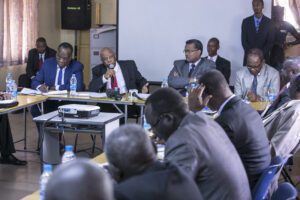Introduction
Monitoring and evaluation services Uganda are indispensable tools for maximizing the effectiveness of development projects across the nation. In a country where NGOs, governments, and international donors collaborate to address challenges like poverty, healthcare, and education, these services provide the framework to measure progress, adapt strategies, and ensure accountability. At its core, monitoring and evaluation services Uganda involve two key components: monitoring, which tracks ongoing activities and outputs, and evaluation, which assesses long-term outcomes and impact. Together, they form the backbone of evidence-based decision-making, enabling stakeholders to optimize resources and achieve sustainable results. This guide explores how these services work, their critical role in Uganda’s development landscape, and how organizations can leverage them effectively.
For more insights on how these services enhance impact, you can explore how monitoring and evaluation in Uganda can maximize impact and optimize resources.
What is Monitoring and Evaluation (M E)?
Monitoring and evaluation (M E) is a systematic process that combines data collection, analysis, and reporting to improve project performance. Here’s how the two components work:
- Monitoring:
- Continuous tracking of activities, inputs, and outputs to ensure projects stay on course.
- Example: A health project in rural Uganda might monitor the number of vaccines administered monthly to gauge progress toward immunization targets.
- Evaluation:
- Periodic assessment of a project’s relevance, effectiveness, and impact.
- Example: After two years, an agricultural initiative in Western Uganda could evaluate whether new farming techniques increased crop yields and household incomes.
By integrating these practices, organizations can identify bottlenecks early, adjust strategies, and demonstrate results to stakeholders.
Importance of M E in Development (Uganda Focus)
The importance of M E in development cannot be overstated, particularly in Uganda’s context of diverse and complex challenges. Key contributions include:
- Accountability: Ensures funds are used as intended and results align with donor and community expectations.
- Adaptive Management: Allows real-time adjustments to improve outcomes (e.g., redirecting resources to underperforming health clinics).
- Evidence-Based Decisions: Provides data to justify scaling successful interventions or discontinuing ineffective ones.
- Resource Efficiency: Identifies cost-effective strategies, such as targeting high-impact agricultural practices in drought-prone regions.
Examples in Uganda:
- In education, M E systems track school enrollment rates to inform policy reforms.
- In health, evaluations assess HIV/AIDS programs to refine prevention and treatment approaches.
To learn more about how M E maximizes impact in Uganda, refer to the guide on how monitoring and evaluation in Uganda can maximize impact and optimize resources.
For more insights into Uganda’s M E frameworks, explore the Uganda Evaluation Association (UEA)’s guidelines or the World Bank’s M E resources for African nations.
Types of M E Services in Uganda
M E services Uganda providers offer tailored solutions to meet diverse project needs:
- Baseline Studies
- Establish initial conditions (e.g., literacy rates before an education program).
- Example: A baseline study for a rural electrification project might measure current energy access levels.
- Process Monitoring
- Tracks implementation fidelity and identifies operational challenges.
- Example: Monitoring contractor compliance in infrastructure projects across Uganda’s districts.
- Impact Evaluations
- Assess long-term outcomes, such as poverty reduction from cash transfer programs.
- Needs Assessments
- Identify gaps before project design (e.g., water scarcity in arid regions).
- M E System Design
- Develop frameworks to streamline data collection and reporting.
For case studies on agricultural M E in Uganda, see the UNDP’s Rural Development Report, or explore baseline study examples from NGOs like BRAC Uganda.
Finding M E Consultants Uganda
Selecting the right M E consultants Uganda requires careful consideration:
Where to Find Them:
- Professional Networks: The UEA connects organizations with certified consultants.
- Donor Lists: USAID and the EU often partner with vetted firms.
- Academic Partnerships: Universities like Makerere University host research units with M E expertise.
Key Qualities to Look For:
- Sector-specific experience (e.g., education, health).
- Proficiency in both quantitative and qualitative methods.
- Familiarity with Uganda’s cultural and regulatory context.
Always request references and review past work samples.
USAID Uganda Partnerships | Makerere University Research
Case Studies
Example 1: Cash Transfer Programs
- M E findings revealed that cash transfers in Northern Uganda improved household resilience, influencing government social protection policies.
Example 2: Health Interventions
- Evaluations of malaria programs in Eastern Uganda demonstrated a 40% reduction in child mortality, leading to scaled-up bednet distribution.
For detailed insights, review UNICEF’s M E reports on child health in Uganda or the World Health Organization’s regional assessments.
Conclusion
Monitoring and evaluation services Uganda are vital for transforming development aspirations into tangible outcomes. By embedding M E into project cycles, organizations can ensure accountability, adapt to challenges, and demonstrate impact. The importance of M E in development is evident in its role as a bridge between resources and results. As Uganda continues its journey toward sustainable development, prioritizing M E services Uganda will remain key to unlocking equitable progress.
This guide equips NGOs and decision-makers with actionable insights to harness M E’s full potential. By partnering with skilled consultants and leveraging robust frameworks, Uganda’s development efforts can achieve greater reach and lasting change.






